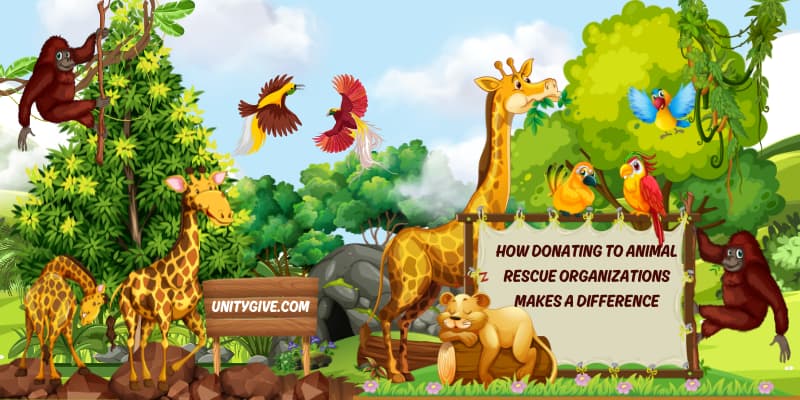Education is a powerful tool that has the potential to break the cycle of poverty, build strong communities, and shape future leaders. However, many children around the world, especially in underprivileged regions, lack the resources necessary to pursue their educational dreams. By supporting a child’s education through donation, you become a part of a transformative journey, ensuring that a child not only learns but thrives. In this blog, we will explore how your donations can positively impact a child’s education and why it is one of the most meaningful ways to give back.
Why Supporting a Child’s Education Matters
Education is one of the most powerful means of empowering future generations. When a child has access to quality education, it opens doors to opportunities and improves their overall quality of life. Donating to support a child’s education helps provide essentials like school fees, books, uniforms, and sometimes even food and shelter. These resources can make a significant difference in a child’s ability to stay in school, perform well, and achieve their academic goals.
Children living in poverty or conflict-stricken areas are often denied basic education, leading to a lifetime of hardship. Your donation can ensure that children have a chance to escape this cycle and build a better future for themselves. By providing access to education, we not only enhance a child’s future but also contribute to the greater good of society.

The Direct Impact of Donations on a Child’s Education
When you donate to an education-focused cause, your contribution can have a variety of direct and measurable impacts. Some of the most notable include:
- Access to Learning Materials: A donation can provide essential tools like textbooks, notebooks, stationery, and even digital resources for children. Without these materials, many students struggle to keep up with their studies.
- Tuition and School Fees: In many regions, school fees prevent children from attending school. Your donation can cover these costs, allowing children to access quality education without worrying about financial burdens.
- Safe Learning Environment: Donations can help build or improve school infrastructure, ensuring that children have a safe, well-equipped environment in which to learn. This includes classrooms, libraries, and even safe drinking water and sanitation facilities.
- Scholarships and Sponsorships: For talented children in underprivileged areas, a donation can fund scholarships or sponsor their entire education, including higher education opportunities. This type of support opens doors to careers in healthcare, technology, law, and more.
- Support Programs: Donations can also fund after-school tutoring, mentorship programs, and counseling services to help children succeed academically and socially.
How to Choose the Right Cause to Support
Not all donation programs are created equal, so it’s essential to select a reputable cause that will ensure your money reaches the children who need it most. Here are a few steps to help you choose a cause that makes a difference:
- Research the Organization: Look for non-profits or charity organizations that have a proven track record of supporting education. Verify their financial transparency and read reviews or testimonials from other donors to ensure their credibility.
- Assess the Focus Area: Some organizations focus on providing education in specific regions or to certain groups of children, such as girls, refugees, or children with disabilities. Choose a cause that aligns with your values and the impact you want to make.
- Check the Program’s Accountability: Ensure that the organization you support is transparent about how your donation is used. Reputable programs should offer regular reports and updates about the projects they fund.
- Long-Term Impact: Consider whether the organization focuses on sustainable education models, such as teacher training, school infrastructure development, or community involvement, which ensure that education becomes a long-lasting solution for children.
The Benefits of Supporting a Child’s Education Through Donation
When you donate to support a child’s education, you’re not just helping one child – you’re impacting the entire community. Here are some of the long-term benefits:
- Breaking the Cycle of Poverty: Education equips children with the skills they need to secure better-paying jobs and support their families in the future, ultimately reducing poverty rates in communities.
- Promoting Gender Equality: Education for girls, in particular, helps empower women, promotes gender equality, and creates opportunities for women to contribute to economic and social development.
- Boosting Economic Growth: Educated children are more likely to contribute to their nation’s economic growth as they enter the workforce with valuable skills.
- Building Stronger Communities: Education nurtures individuals who can lead, volunteer, and create change in their communities, building a more educated and prosperous society.
- Improving Health and Well-being: Educated individuals are more likely to make informed decisions about health, hygiene, and nutrition, which can lead to better health outcomes for entire families.
How You Can Get Involved
Supporting a child’s education doesn’t require a significant financial commitment. Here are a few ways you can get involved:
- Make a One-Time Donation: If you have the means, a one-time donation can have an immediate and meaningful impact on a child’s education.
- Monthly Contributions: By setting up a monthly donation, you can create a consistent stream of support for children’s education over time, helping more students succeed.
- Fundraise: Organize or participate in fundraisers within your community or online to raise money for children’s education.
- Volunteer Your Time: Many organizations need volunteers to tutor students, assist in fundraising efforts, or help with administrative tasks.
- Spread Awareness: Share your passion for supporting education by telling friends and family about the causes you believe in. The more people that are aware of the need, the more children’s lives you can change.
Read Also: Where to Donate Used School Supplies: Giving Back to the Community
Conclusion
Education is the key to unlocking a world of possibilities. By donating to support a child’s education, you are not only giving them the tools they need to succeed, but also helping build a brighter future for communities and nations around the world. Whether it’s funding school fees, providing learning materials, or supporting scholarships, your generosity plays a crucial role in ensuring that every child has the opportunity to learn, grow, and thrive.
In a world where millions of children still lack access to basic education, every contribution makes a difference. Take the step today to invest in a child’s education – your donation can change a life, and in doing so, change the world.
FAQ’s: Supporting a Child’s Education Through Donation
- Why is it important to donate for children’s education?
Donations provide essential resources such as school fees, books, and school infrastructure, helping children gain access to quality education. - How does donating to education benefit communities?
Education helps lift children out of poverty, promotes gender equality, boosts economic growth, and strengthens communities. - What types of donations can support a child’s education?
Donations can cover school fees, provide learning materials, fund scholarships, improve school infrastructure, and support educational programs. - How do I choose a reliable organization to donate to?
Research the organization, assess its focus area, check its accountability, and ensure that it creates long-term impacts through sustainable programs. - What are the long-term effects of supporting a child’s education?
Supporting education leads to better job opportunities, reduces poverty, fosters gender equality, and promotes community development, creating a ripple effect for generations to come.





